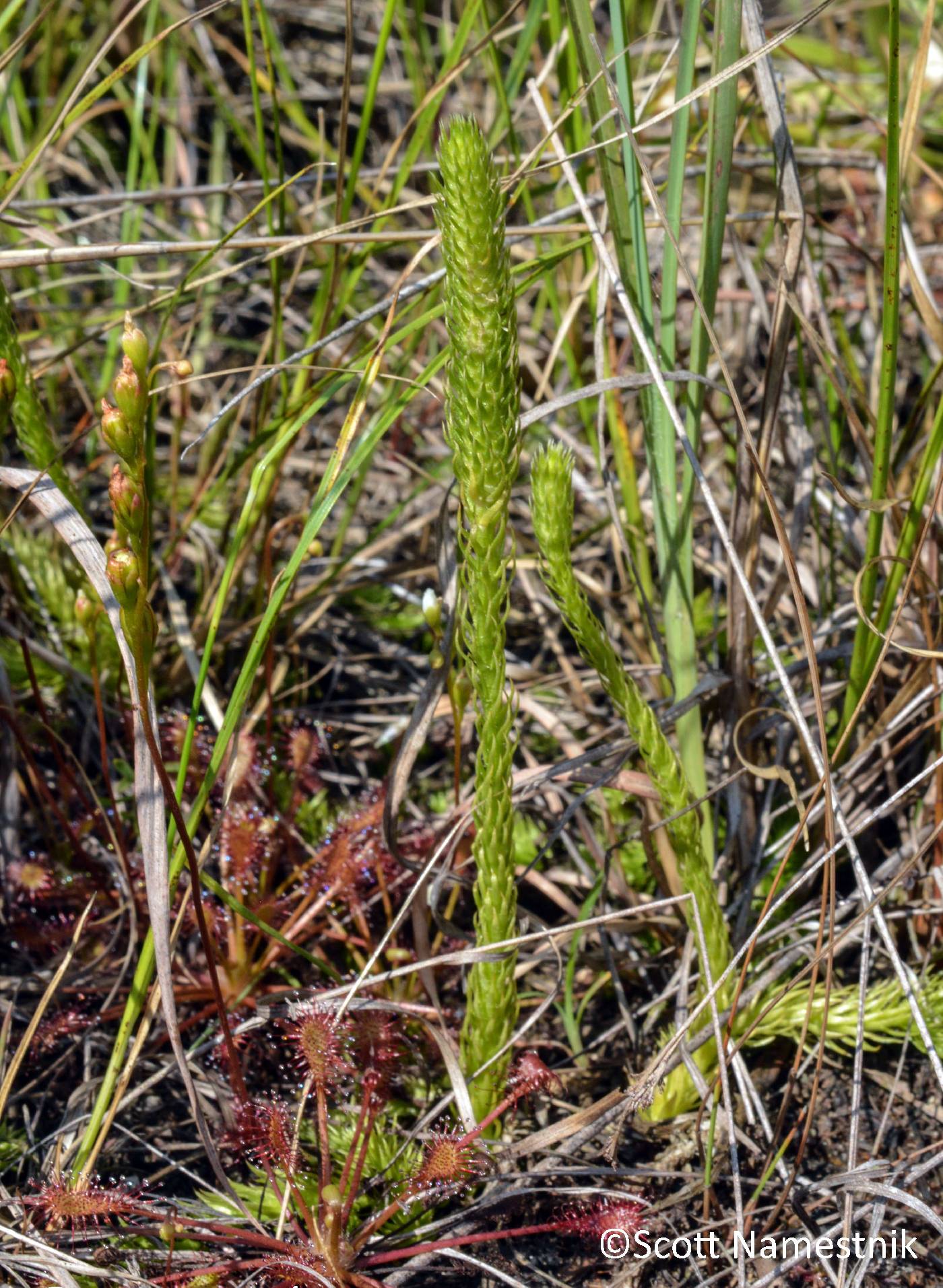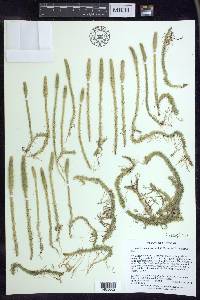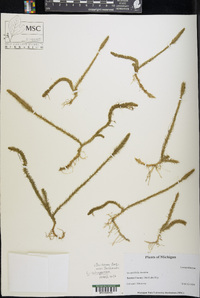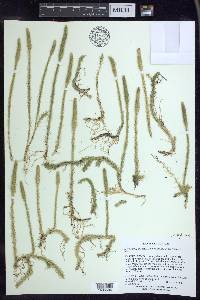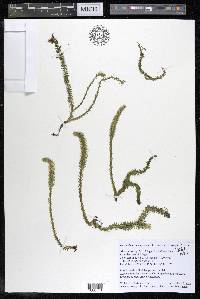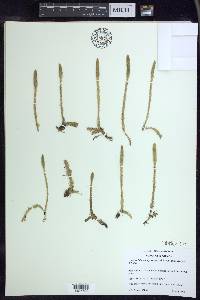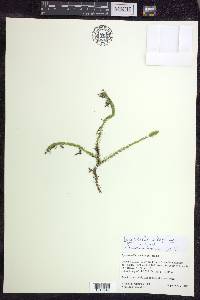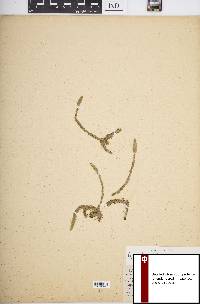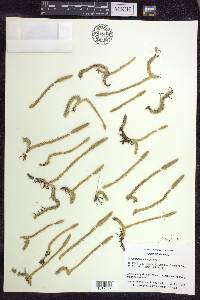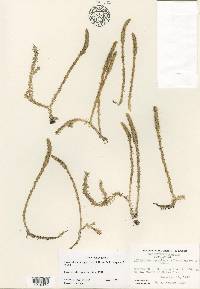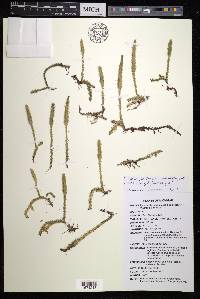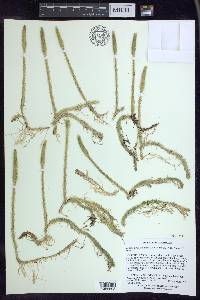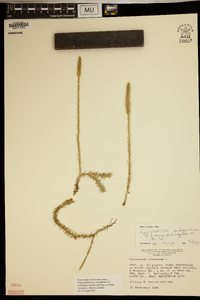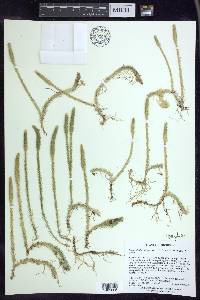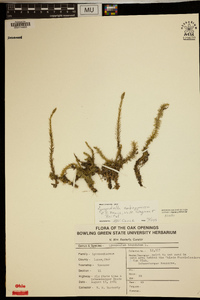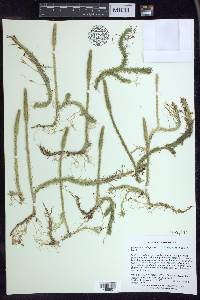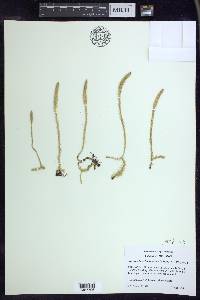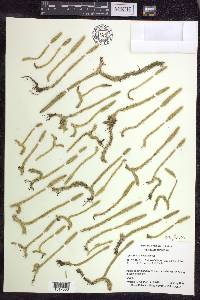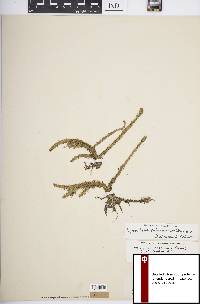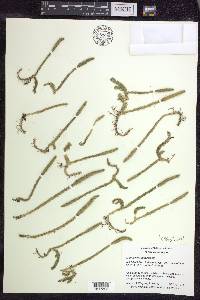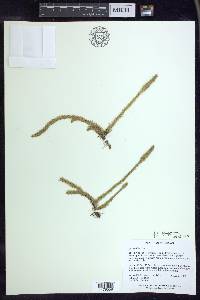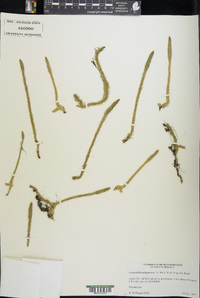Lycopodiella subappressa
|
|
|
|
Family: Lycopodiaceae
Northern Appressed Club-Moss
|
Horizontal stems flat on ground, 4--17 X 0.3--0.8 cm, stems (excluding leaves) thick, 1--1.5 mm diam.; leaves monomorphic, vertically ascending, further ascending when dry, 4--6 X 0.8--1 mm, marginal teeth absent. Upright shoots 1, 9--13 X 0.4--0.5 cm; strobilus 1/5--1/3(--1/2) total length; leaves strongly appressed, 3.5--6 X 0.3--0.8 mm, marginal teeth absent. Strobili 20--40 X 4--8 mm. Sporophylls appressed, 3--4 X 0.2--0.5 mm, marginal teeth absent. 2 n = 312. Wet, acidic ditches and borrow pits; of conservation concern; 0--200 m; Mich. The distinctive Lycopodiella subappressa and L . margueritae are sexual polyploids. The full geographic distribution of L . subappressa is still unknown.
Perennial fern ally 9 - 18 cm tall Leaves: of upright stems strongly appressed, stalkless, green, 3.5 - 6 mm long, 0.3 - 0.8 mm wide, linear to lance-shaped, and non-toothed. Spores: hundreds per sac, all of one kind, thick-walled, wrinkled, three-sectioned (trilete) with pointed angles. The spores give rise to the gametophyte (the sexual phase of the plant), which is small, pincushion-shaped, green, photosynthetic, and on substrate surface rather than buried. Upright stems: single, unbranched, green, leafy, and more slender than horizontal stem (3 - 7 mm diameter). Horizontal stem: on top of soil or substrate surface, 4 - 17 cm long, thick (3 - 8 mm diameter; excluding leaves 1 - 1.5 mm), covered with vertically ascending, 4 - 6 mm long, 0.8 - 1 mm wide, linear, non-toothed leaves, and also with slender roots emerging on underside of stem. Similar species: Lycopodiella subappressa is quite similar to L. margueritae, but that species has teeth on the leaves of the horizontal stems, the horizontal stems are over 1.6 mm in diameter (excluding the leaves), the leaves of the upright stems and strobili are less appressed, the strobili are usually longer (5 - 8 cm long) and normally over 2 mm thicker than the subtending upright stems. These two species are known to hybridize, and the fertile hybrid has been reported in the Chicago Region. This species is also quite similar to the more southern species L. appressa, but that species is normally larger in stature with a 15 - 45 cm long horizontal stem, 5 - 7 mm long and 0.8 - 1 mm wide leaves that may have three pairs of teeth, and up to seven upright stems which are taller (13 - 40 cm tall). Habitat and ecology: Quite rare, usually in wet, acidic conditions such as ditches, swales, and sand pits. Occurence in the Chicago region: native Notes: Like the closely simlar L. margueritae, the full distributional range of L. subappressa is unknown. In the past, specimens of this species have probably been placed under the name L. indundata. Species of Lycopodiella hybridize freely, and when the parent species have the same ploidy level the hybrids are fertile. Lycopodiella subappressa can hybridize with the other two species of the Chicago Region, L. margueritae and L. inundata. Only the hybrids with L. margueritae are fertile. Etymology: Lycopodiella is a combination of the genus name Lycopodium, and the suffix ella, referring to the diminutive form (smaller) of this genus compared to Lycopodium. Supappressa refers to a resemblance to Lycopodiella appressa in its similar, but smaller (sub) stature. Author: The Field Museum From Flora of Indiana (1940) by Charles C. Deam Indiana Coefficient of Conservatism: C = 7 Wetland Indicator Status: FACW Diagnostic Traits: plants of wet habitat; horizontal stems on substrate surface, their internodes more than 1 mm in diameter; upright shoots mostly 9-15 cm tall, their leaves appressed; strobili borne on leafy peduncles. |

